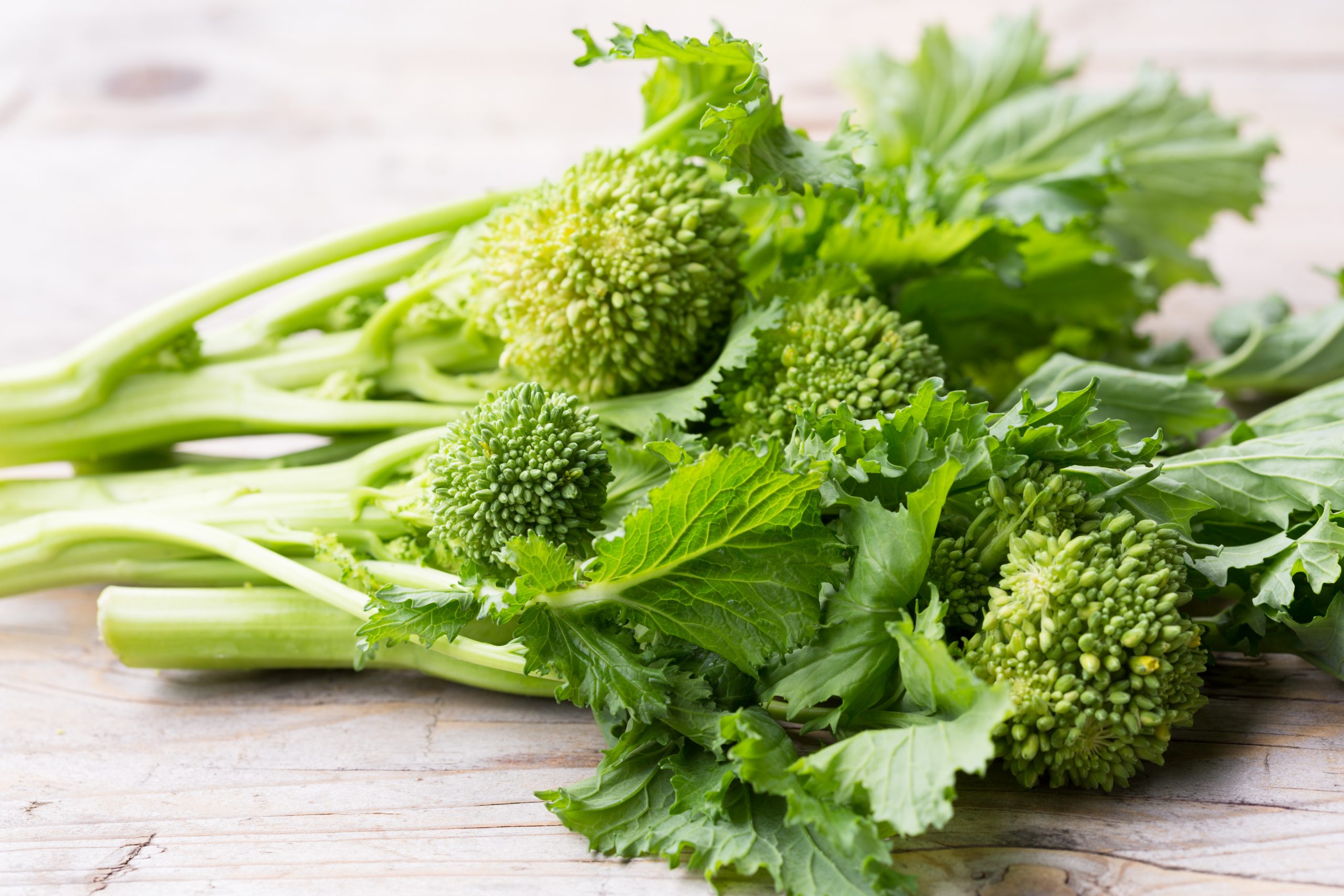Broccoli Raab: Good for Us and the Honeybees
March 04, 2016
Beekeeping can be a very rewarding hobby or occupation even, especially in the spring and summer months when plants are in bloom and there are plenty of places for honeybees to scope out for nectar. However, beekeeping can be hard in the fall and winter months when there is less food for the bees, forcing them to remain in close proximity to the hive and survive on honey reserves. A common practice for beekeepers during colder weather is to use a diet of protein supplements in order to keep the bees in full health and from using up winter honey reserves. It’s believed, however, that there are better ways to promote honey production in cold months, especially since beekeepers report less success with protein supplements. Honeybees, like us, want the real thing, real protein.
According to the Agricultural Research Service (ARS), “Studies show that managed honeybee colonies that foraged pollen from plots of fall-seeded rapini (broccoli raab) fared better than protein-supplemented colonies.” Researchers started investigating broccoli raab because of its cold-hardiness, attractiveness to bees, and ability to flower six weeks after planting. The belief is that if beekeepers plant broccoli raab near colonies, then the honeybees just by their preference for it will have more success and possibly fewer collapses.
Broccoli raab is considered one of the most nutrient-dense foods on the planet, with a roughly 17 grams of protein in one serving (hence the preference for it over protein supplements!) It’s also packed with potassium, iron, calcium, fiber, and vitamins A, C, and K. Some of the health benefits for people include lessened inflammation and protection from cancer, Alzheimer’s, and birth defects--and such health benefits are transferable to honeybees that rely on it for nectar.
While not popular in the US, broccoli raab is reliably easy to grow in both its spring and fall varieties. The fall variety blooms quicker and is a favorite of honeybees, though broccoli raab planted in warmer months can develop a less preferable, more bitter taste. It’s a leafy vegetable in the cruciferous family of plants, looking like broccoli that never came to a head. And as stated earlier, it’s surprisingly hard to come by, with gardeners often having to buy seeds online or from far away. This is why beekeepers, if they’ve read the ARS study, would do well to stock up on the plant that could really increase their honeybees’ livelihoods and honey production.
For growing broccoli raab, the planting season in roughly Feb. 15 to April 30th and requires well-drained, average soil. If you don’t have fresh topsoil, fertilize immediately upon installation and again three weeks after the seeds come up with a 10-10-10 fertilizer. Keep them in full sun for maximum growth--and for easy spotting by hungry honeybees.


.jpg)



